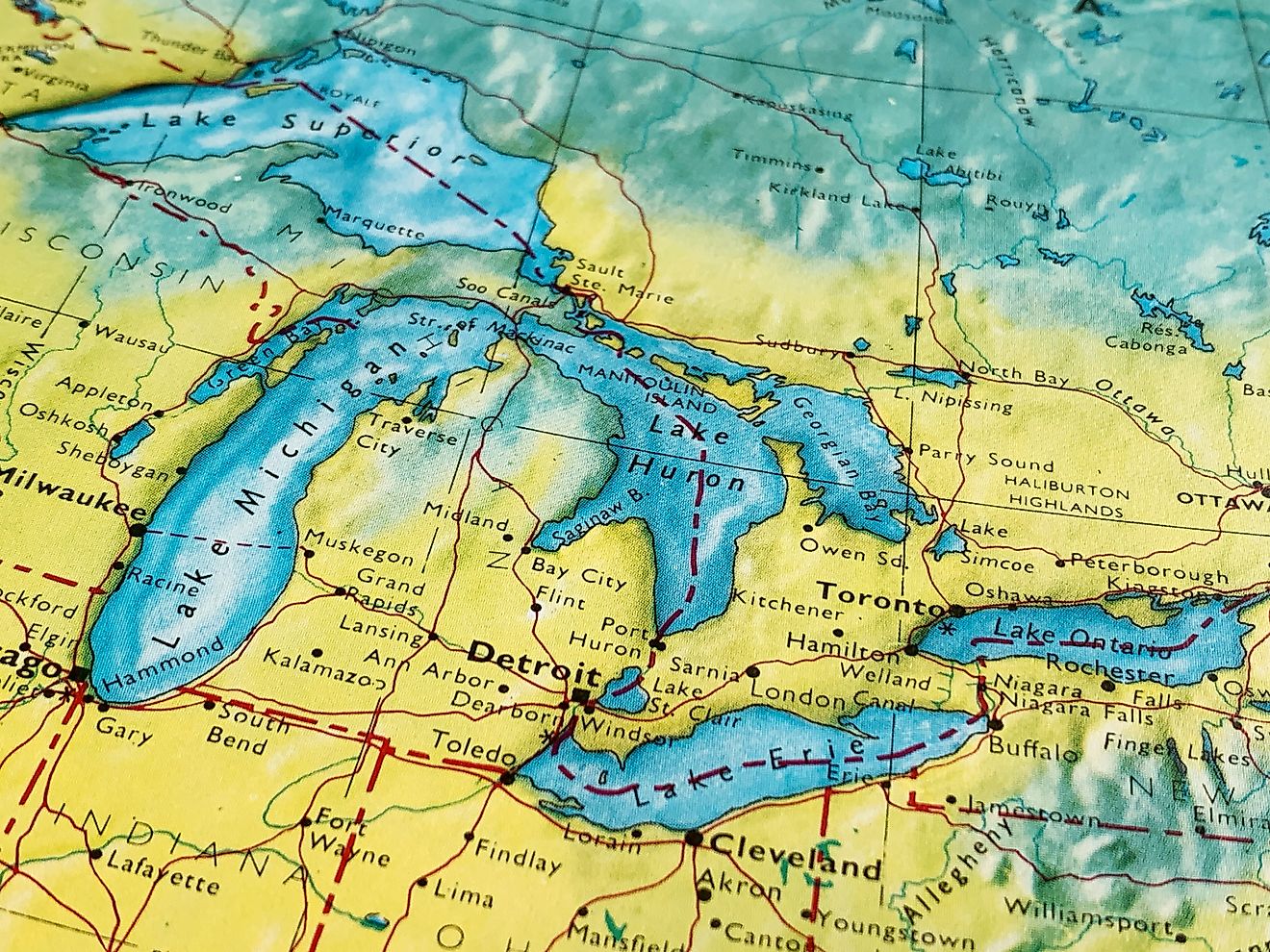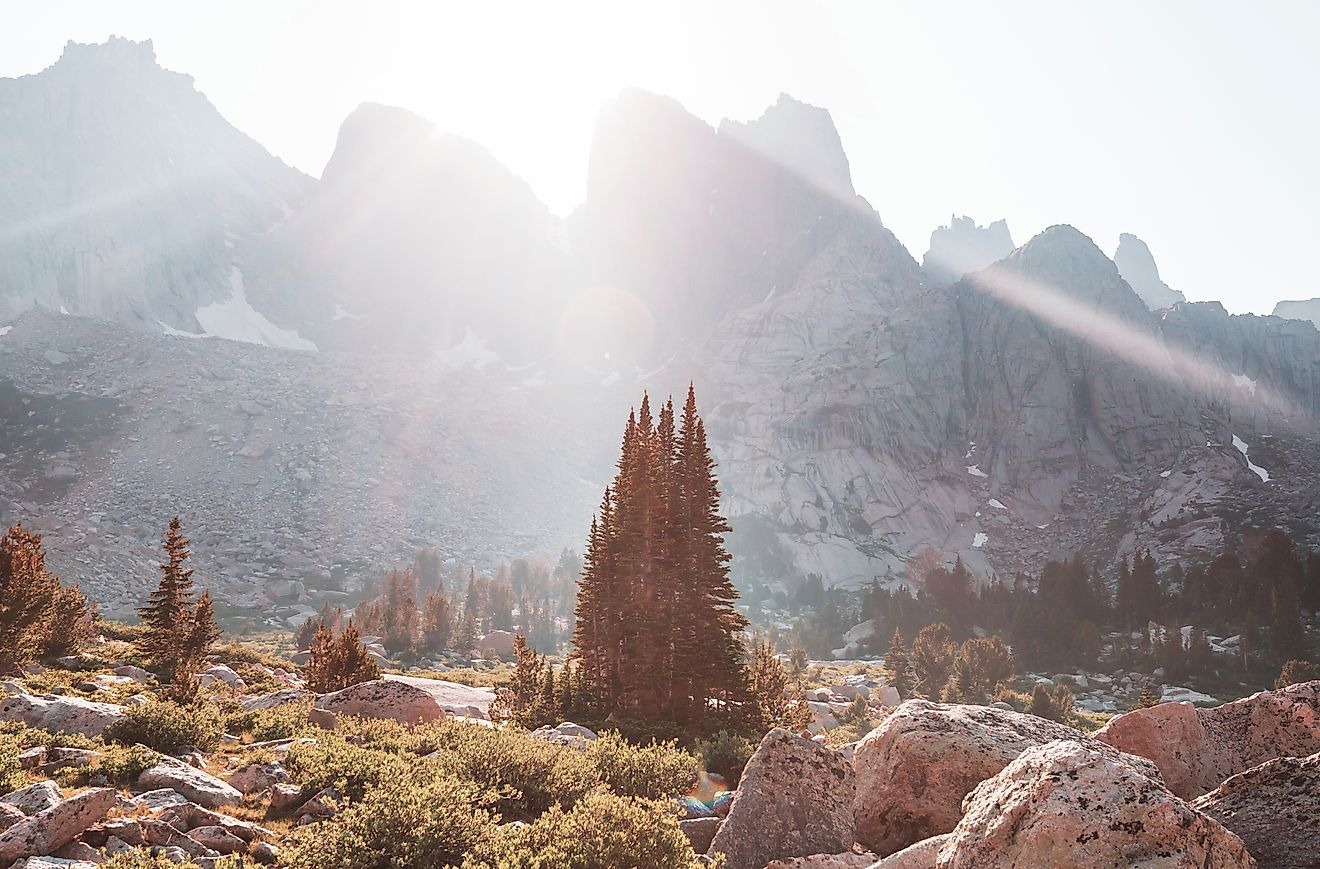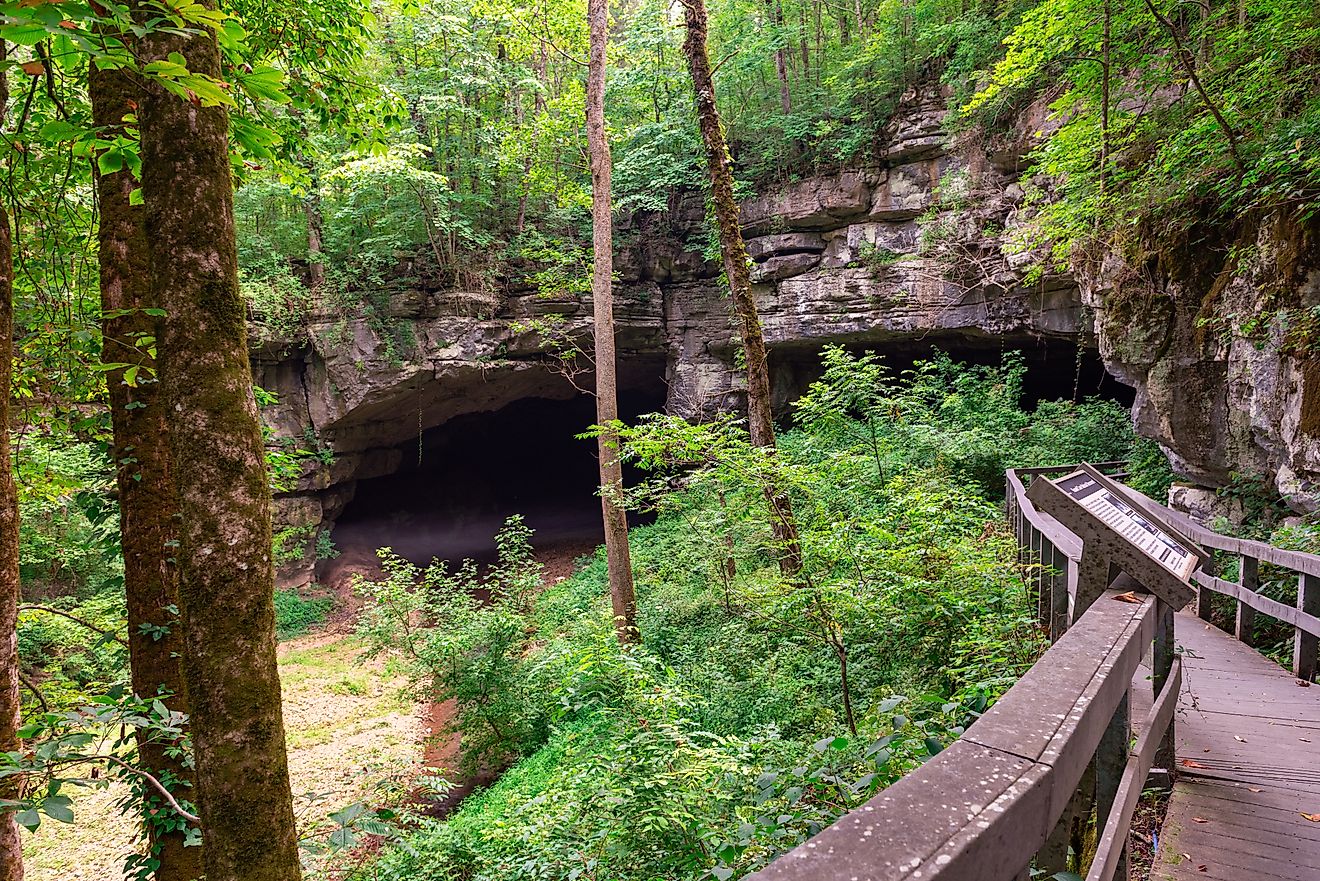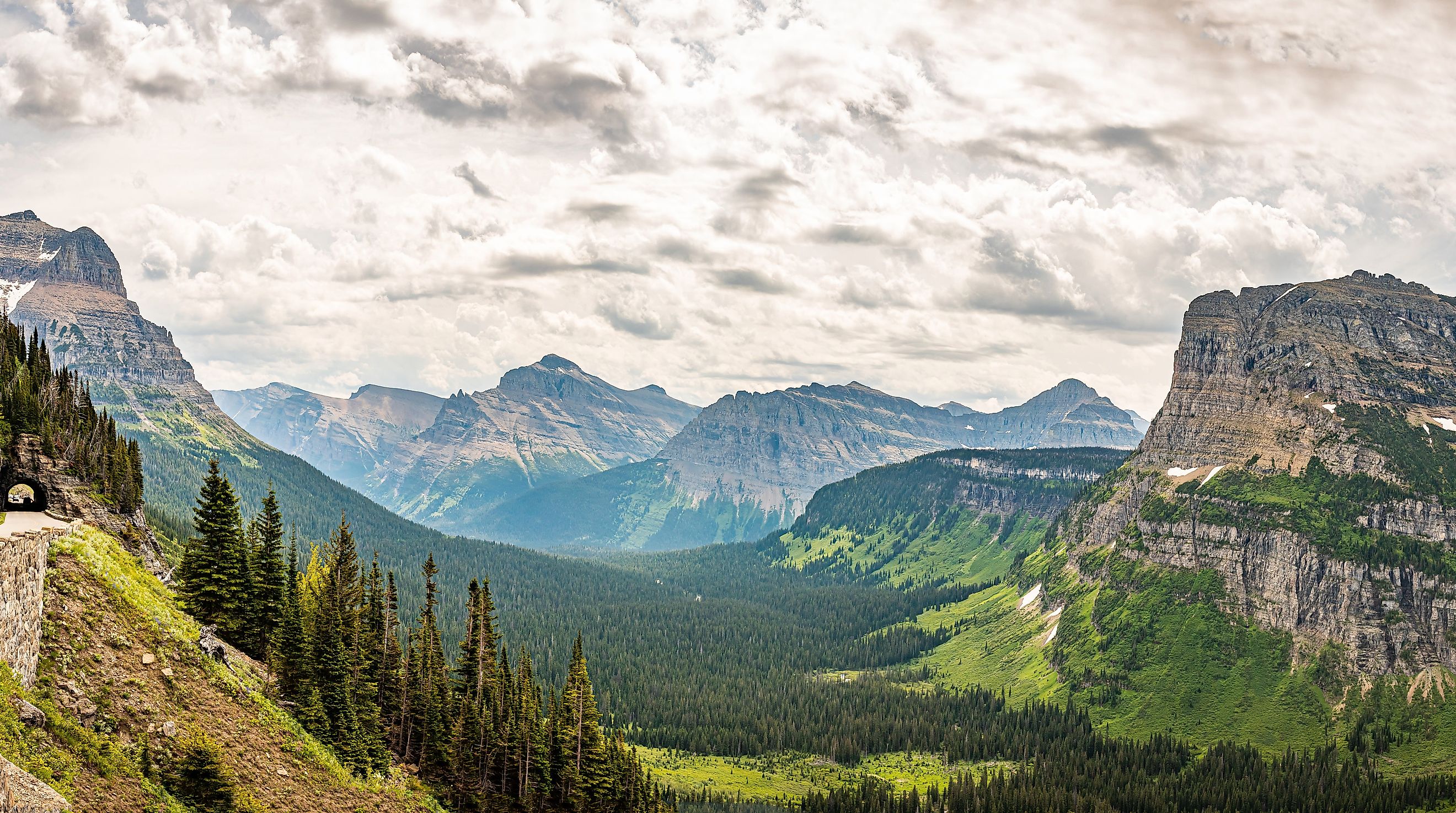
The Longest Mountain Ranges in The United States
Mountain chains stand as significant features, shaping landscapes and cultures. These dynamic ecosystems regulate weather patterns, preserve biodiversity, and contribute to our nation's natural beauty and heritage. In the United States, several mountain chains stand out for their grandeur and ecological significance. From the rugged Rockies to the ancient ridges of the Appalachians and the granite spires of the Sierra Nevada, these mountains epitomize nature's enduring power and allure. Explore the three longest mountain ranges in the US.
The Rocky Mountains

Geographic Extent and Location
The Rocky Mountains, one of North America's most iconic mountain ranges, stretches from the northernmost reaches of British Columbia, Canada, to the southern tip of New Mexico. This vast expanse covers approximately 3,000 miles, making it one of the longest mountain chains on the continent.
The Rockies traverse through multiple states including Montana, Wyoming, Colorado, Utah, and New Mexico. Their geographic footprint spans a significant portion of the western United States, dominating the landscape with their imposing presence.
Geological Characteristics and Formation
The geological characteristics and formation of the Rocky Mountains are a testament to the immense forces that have shaped this iconic mountain range over millions of years. These rugged peaks owe their existence to a complex interplay of tectonic activity, erosion, and glaciation.
The Rockies began to take shape around 70 million years ago during the Laramide orogeny, a period of intense mountain-building activity in western North America. The collision of tectonic plates forced the Earth's crust to buckle and uplift, giving rise to the towering peaks we see today. Sedimentary rocks, including sandstone, limestone, and shale, were uplifted and folded, forming the foundation of the Rockies.
Subsequent periods of erosion, driven by wind, water, and ice, sculpted the landscape, carving deep valleys, steep cliffs, and jagged peaks. Glacial activity during the Pleistocene epoch further modified the terrain, leaving behind U-shaped valleys, cirques, and moraines as evidence of the glaciers' passage.
Today, the Rockies boast a diverse range of geological formations, including sedimentary layers thrust up from ancient seabeds, igneous intrusions formed by volcanic activity, and metamorphic rocks altered by intense heat and pressure. This complex geology contributes to the region's rich mineral deposits, including gold, silver, copper, and coal, which have played a significant role in shaping the economy and history of the American West.
Biodiversity and Ecosystems
Despite their harsh climate and rugged terrain, the Rockies support a remarkable diversity of flora and fauna. From the subalpine forests of spruce and fir to the alpine meadows carpeted with wildflowers, these mountains provide vital habitat for numerous species, including elk, bighorn sheep, and grizzly bears.
The Rockies are also home to a wealth of smaller creatures, from elusive mountain lions and lynx to elusive species like the pika and the white-tailed ptarmigan, adapted to survive in these challenging environments. This intricate web of life is sustained by the interconnected ecosystems that span the length and breadth of the Rockies, contributing to its rich biodiversity.
Human Activities and Economic Significance
Human presence in the Rockies dates back thousands of years, with indigenous people relying on these mountains for hunting, gathering, and spiritual practices. Today, the region supports a thriving outdoor recreation industry, attracting millions of visitors annually for skiing, hiking, and wildlife viewing. Furthermore, the Rockies are rich in natural resources such as minerals, timber, and freshwater, contributing to the economic prosperity of the surrounding communities.
The Rockies serve as a crucial watershed, providing freshwater resources for agricultural irrigation, hydroelectric power generation, and urban water supplies across the region. This economic significance underscores the delicate balance between conservation and development in the Rocky Mountain region.
The Appalachian Mountains
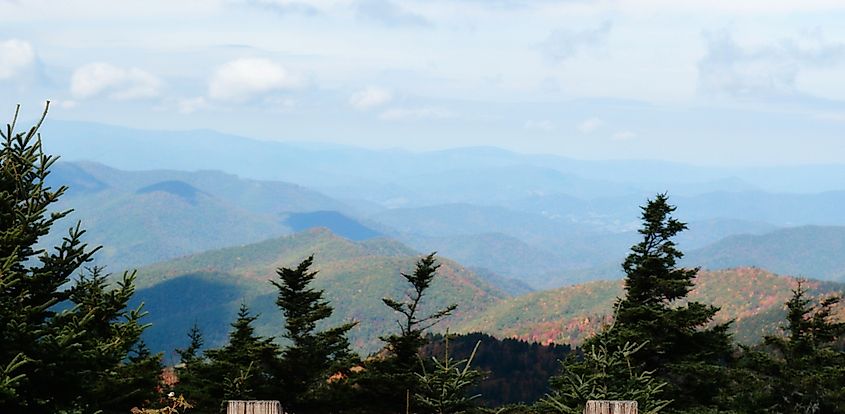
Geographic Span and Location
Spanning over 1,500 miles from Alabama to Newfoundland, the Appalachian Mountains form the oldest mountain range in North America. They extend through 15 states and several Canadian provinces, including Maine, New Hampshire, Vermont, New York, Pennsylvania, and Georgia. This vast geographic expanse encompasses a variety of landscapes and ecosystems, from the rolling foothills of the southern Appalachians to the rugged peaks of the northern Appalachians. Along their length, the Appalachians are a defining feature of the eastern United States and Canada, shaping the region's geography, climate, and cultural heritage for millennia.
Geological Origins and Unique Features
Unlike the towering peaks of the Rockies, the Appalachians are characterized by gentle slopes, rounded summits, and heavily forested valleys. They originated over 480 million years ago during the assembly of the supercontinent Pangaea, undergoing multiple cycles of erosion and uplift. Despite their subdued appearance, the Appalachians harbor unique geological features, including the Great Appalachian Valley, a vast lowland that stretches over 1,200 miles along the eastern edge of the mountain range.
Additionally, the Appalachians are known for their rich mineral deposits, including coal, iron, and limestone, which have played a significant role in the region's economic development. The Appalachian Trail, stretching over 2,000 miles from Georgia to Maine, offers hikers a glimpse into the region's geological and ecological diversity.
Ecological Diversity and Significance
Despite their modest elevation, the Appalachians harbor a rich tapestry of ecosystems, ranging from temperate hardwood forests to montane bogs and balds. These mountains are known for their biological diversity, supporting numerous endemic species of plants and animals. However, human activities such as logging, mining, and urbanization pose significant threats to the region's ecological integrity.
The Appalachian Mountains also serve as a critical migratory corridor for birds and other wildlife, connecting northern and southern habitats and facilitating gene flow among populations. Protecting these ecosystems is essential for preserving biodiversity and maintaining the health of the entire Appalachian region.
Cultural and Historical Importance
The Appalachians hold deep cultural significance for the communities that call these mountains home. From the Cherokee and Iroquois nations to the Scotch-Irish settlers of Appalachia, these mountains have been shaped by centuries of human history and folklore. Today, the region's vibrant music, cuisine, and traditions continue to celebrate its rich cultural heritage.
The Sierra Nevada Mountains

Geographic Distribution and Location
Running roughly 400 miles along the eastern edge of California, the Sierra Nevada Mountains form a dramatic barrier between the arid deserts of the Great Basin and the fertile valleys of the Central Valley. They encompass iconic landmarks such as Yosemite National Park, Sequoia National Park, and Lake Tahoe. Moreover, the Sierra Nevada Mountains are home to some of the highest peaks in the contiguous United States, including Mount Whitney, which towers at 14,505 feet above sea level.
Geological Formation and Notable Features
The Sierra Nevada is known for its granite peaks, including the iconic Half Dome and El Capitan in Yosemite Valley. These mountains were uplifted and sculpted by tectonic forces over millions of years, resulting in breathtaking landscapes of sheer cliffs, glacial valleys, and pristine alpine lakes.
Furthermore, the Sierra Nevada is home to some of the oldest trees on Earth, the giant sequoias, which have stood sentinel in the mountain forests for thousands of years. This unique geological formation and the presence of ancient giants contribute to the Sierra Nevada's status as a natural wonder of the world.
Flora and Fauna Diversity
Despite their relatively small size compared to other mountain chains, the Sierra Nevada Mountains support a rich diversity of plant and animal life. From ancient groves of giant sequoias to rare alpine species adapted to high elevations, these mountains provide critical habitat for a variety of endemic and migratory species.
The Sierra Nevada is home to over 400 vertebrate species, including iconic wildlife such as black bears, mountain lions, and mule deer. The region's diverse ecosystems, ranging from montane forests to alpine meadows, support a wide array of flora, including over 2,000 species of vascular plants.
Recreational Activities and Economic Impact
The Sierra Nevada Mountains are a mecca for outdoor enthusiasts, offering a wide range of recreational opportunities year-round. From skiing and snowboarding in the winter to hiking, camping, and rock climbing in the summer, these mountains attract millions of visitors annually, contributing significantly to the local economy through tourism and outdoor recreation.
Conclusion
The longest mountain chains in the United States are not just geological features; they are dynamic ecosystems that play a vital role in shaping the nation's landscapes, cultures, and economies. As we continue to explore and appreciate these majestic mountains, protect and preserve them by implementing sustainable practices and conservation efforts. We can ensure that the Rocky Mountains, the Appalachian Mountains, and the Sierra Nevada Mountains remain havens of biodiversity, sources of inspiration, and treasured natural wonders for centuries to come.
